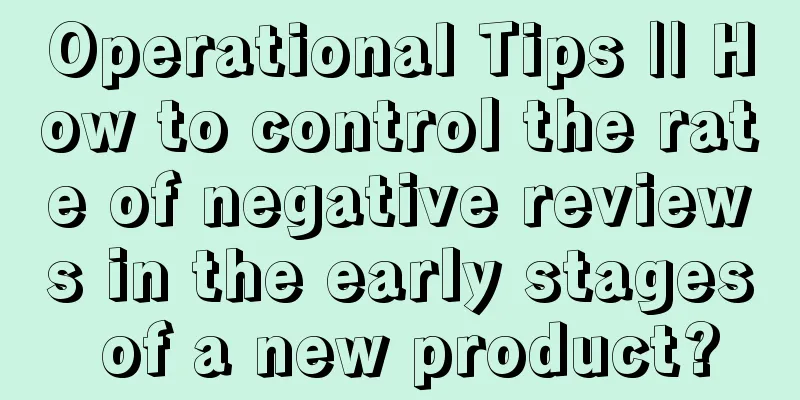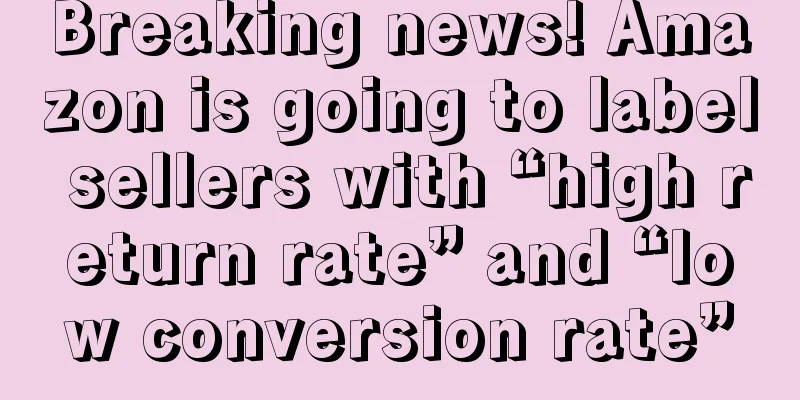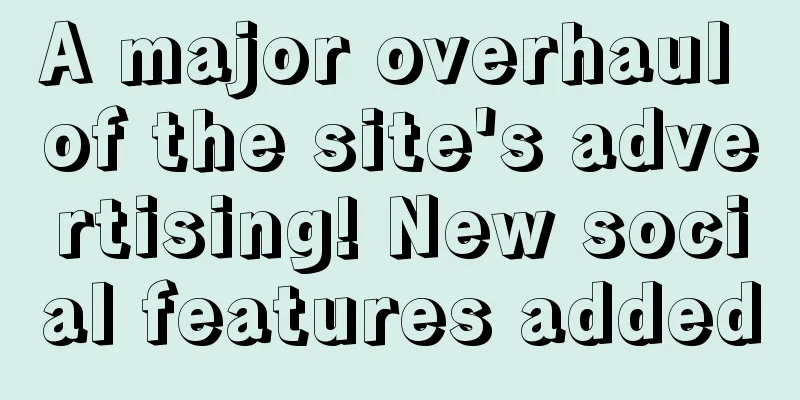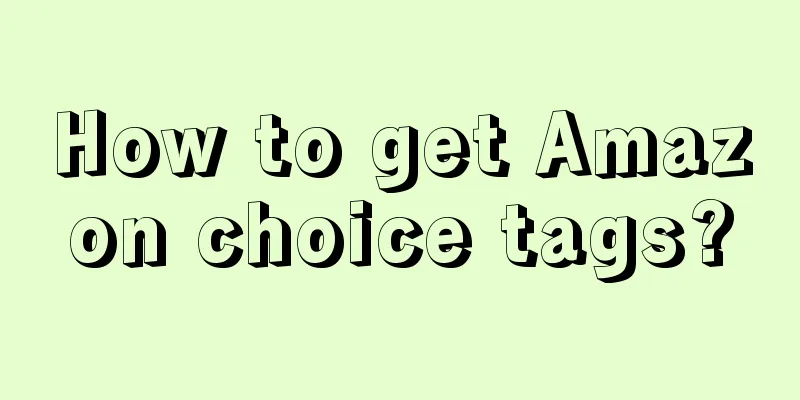Operational Tips || How to control the rate of negative reviews in the early stages of a new product?

|
2. Promotion Period - END - |
<<: The product is out of stock. How to re-promote it with advertising?
>>: Which bidding strategy is recommended for new products on Amazon?
Recommend
What is OBOR? OBOR Review
OBOR is a company dedicated to helping global SMEs...
Advertising during the peak season has skyrocketed, and sellers’ ACOS has soared by 500%!
2020 can be said to be the first year of disaster ...
Autumn Prime sales are out! Already 70% of Prime Day sales
Last week's Amazon Autumn Prime event allowed ...
Amazon updates the latest "shopping cart" gameplay, and sellers are shocked!
In recent years, Amazon's policies have become...
What are the entrepreneurial projects derived from Tik Tok?
After nearly two years of rapid development, both ...
What is Guangzhou Dijie International Freight Forwarding Co., Ltd.? Guangzhou Dijie International Freight Forwarding Co., Ltd. Review
Guangzhou Dijie International Freight Forwarding C...
US holiday season consumer survey! 98% of people choose Amazon first
It is learned that recently, Shopkick surveyed mor...
Walmart launches a series of celebrations on TikTok to prepare for the back-to-school season!
Walmart is launching a back-to-school celebration ...
What is SECockpit? SECockpit Review
SECockpit is an SEO keyword research tool for Inte...
What is ZPSPAPI? ZPSPAPI Review
ZPSPAPI provides one - stop services from system p...
How do Amazon sellers adjust bids based on ad placement?
Amazon PPC ads have multiple placements, includin...
Last year’s net profit was over 100 million, and another Amazon blockbuster is about to be launched!
The cross-border e-commerce listing boom continues...
What is Phrase Match? Phrase Match Review
Phrase match is phrase matching. Phrase matching s...
Is the Barbie effect, which has caused crazy sales, starting to backfire?
Since July this year, the "pink storm" c...









